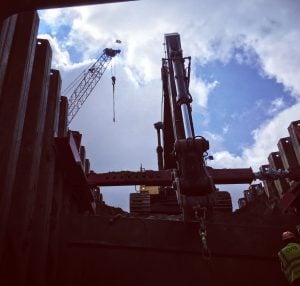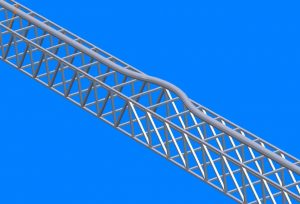What if? How many times have you asked yourself that simple question? From the inconsequential to the very consequential, “What If” questions necessarily generate hypothetical answers that have little basis in reality. Let’s see how that can work with scaffolding.
- What if— there was no Occupational Safety & Health Administration, OSHA, in the United States? Would safety on thejobsitebe any less or would it be better?
- What if— the OSHA regulations were not applicable in say, Pennsylvania, while still applicable in the rest of the United States? Would there be a difference in injury and fatality rates in Pennsylvania?
- What if— it was mandatory that no supported scaffold could have guardrails? Would more workers fall off the scaffold?
- What if— the CalOSHA standards did not exist in California? Would it make a difference?
- What if— California didn’t exist?
- What if— all scaffold erectors had to be licensed? Would it make a difference? How would you know? Who would do the licensing, the Department of Motor Vehicles?
- What if— safety factors were not required on scaffolding? Does anyone know if scaffolds have safety factors?
- What if— OSHA compliance officers carried firearms?
- What if— what if workers carried firearms?
- What if— marijuana was legalized in Colorado? Oh wait, it is! How will that effect scaffold erections and use?
- What if— only non-trained workers could erect scaffolds? I think we already know.What if— you couldn’t sue manufacturers when an accident occurs? Would it change anything?
- What if— Employers could be sued by their employees? Would it change anything?
- What if— OSHA compliance officers were given sufficient training to do their jobs better?
- What if— scaffolds could only be designed by a qualified person? Think about this one.
- What if—scaffolds could be designed by anyone? (Actually, this isn’t a “What If” question since it happens every day.)
- What if— the scaffold designer was responsible for the scaffold design?
- What if— everybody was color blind? Would a tagging system still work?
- What if— bamboo scaffolds were used in the United States or Canada? Could they be compliant with the OSHA standards? (The answer is yes, in case you were wondering.)
- What if— the world was made of mud? Could you build any scaffolds?
- What if— areal lifts could only be operated by a worker’s mother? Would anything change?
- What if— the three biggest scaffold companies in North America combined, would scaffolds be safer?
- What if— What if all the scaffold suppliers who are members of the SAIA merged? Would scaffolds be safer?
- What if— all scaffold users took scaffold training? Would injury and fatality rates drop?
- What if— no one extended ladders three feet above the platform? Would anyone fall off the ladder?
- What if— OSHA, CalOSHA, the Army Corps, the Maritime industry and MSHA agreed to a standardtoprailheight? Would the world come to an end? (Answer: probably)
- What if— OSHA cited you? Would you know if the citation was legitimate?
- What if— the OSHA injury and illness log was never posted each year? Would that change the injury statistics?
- What if— all government workers had to comply with the OSHA standards?
- What if— only government workers had to comply with the OSHA standards?
- What if— OSHA fall protection regulations were waived for scaffold erectors? Would the injury and fatality rates change? If so, would it be for better or for worse?
- What if— suspended scaffold users actually complied with the regulations? Would the injury and fatality rate go to zero? If not, why not?
- What if— all scaffold trainers had to be licensed? Who would do that?
- What if— there was no Worker Compensation Insurance? Would anything change?
- What if— nobody got onto scaffolds? Would anything change?
- What if— you attached your lanyard to the guardrail that you are standing behind on the platform? Are you violating any standards? (The answer is no.)
- What if— you think the answer above is wrong? (Then you would be wrong.)
- What if— the friendly compliance officer cited you for attaching the lanyard to the guardrail that you are standing behind on the platform? Would you fight the citation?
- What if— you attached your lanyard to a scaffold and fell? Do you know what might happen next?
- What if— you sold scaffold products without knowing how strong they are? Are you doing anything wrong?
- What if— you were driving around in an aerial lift and you hit a hole in the pavement; do you know what will happen next?
- What if— you decided to not get into the scaffold business? Would you still be alive?
- What if— more women were scaffold erectors? Would it be safer? (How many female erectors are there?)
- What if— you read (or reread) the applicable scaffold standards? Would anything change? Do you know what the applicable scaffold standards are for your project?
- What if— you read all the OSHA standards? Would you be safer?What if— I never started writing articles on scaffolding? (Don’t answer that!)













